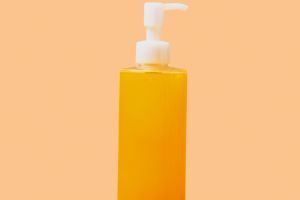In your daily lives, we often overlook the importance of maintaining our tableware.
However, just like any other household item, tableware has a lifespan and poses certain risks if not replaced or cleaned properly.
Let's explore how frequently you should change your tableware and uncover four hidden dangers associated with using tableware.
How Often Should You Change Your Tableware?
The frequency with which you should change your tableware depends on several factors, including the material, usage, and condition. Here are some general guidelines for different types of tableware:
1. Ceramic and Porcelain Plates: These materials are durable and can last for many years if properly cared for. However, if they become chipped, cracked, or heavily stained, it's time to replace them. Regular inspection can help you identify when they need to be replaced.
2. Glassware: Like ceramics, glassware can last a long time if handled with care. Replace any glasses that are chipped or have hairline cracks to avoid potential injury.
3.Plastic Tableware: Plastic plates and cups are more susceptible to wear and tear. Over time, they can develop scratches and harbor bacteria. It is advisable to replace plastic tableware every 1-2 years or sooner if they show signs of damage.
4. Cutlery: Stainless steel cutlery can last for many years, but if they become bent, rusty, or lose their shine, it might be time for a replacement. Regular polishing can extend their life, but once they start to degrade, it's best to replace them.
5. Wooden Utensils: Wooden spoons and cutting boards can harbor bacteria and develop cracks over time. Replace wooden utensils every 2-3 years or when they show signs of splintering or excessive wear.
Hidden Dangers of Using Tableware
While tableware is an essential part of our daily routine, it can pose several hidden dangers if not properly maintained or replaced. Here are four risks to be aware of:
1. Bacterial Contamination
One of the most significant hidden dangers of using old or damaged tableware is bacterial contamination. Cracks, chips, and scratches can create breeding grounds for bacteria, making it difficult to clean thoroughly. This can lead to foodborne illnesses and infections. To minimize this risk, regularly inspect your tableware for any signs of damage and replace items as needed.
2. Chemical Leaching
Certain types of tableware, particularly plastic and some ceramics, can leach harmful chemicals into your food and drinks. Plastic tableware, especially when scratched or exposed to high temperatures, can release chemicals like BPA (Bisphenol A) and phthalates, which are linked to health issues such as hormonal imbalances and cancer. Similarly, some ceramics with non-food-safe glazes can release lead and other toxic substances. Opt for high-quality, food-safe materials and replace any items that show signs of wear.
3. Physical Injury
Using damaged tableware can lead to physical injuries. Chipped plates, cracked glasses, and splintered wooden utensils can cause cuts and punctures, posing a risk to both adults and children. Regularly check your tableware for any damage and replace items that are no longer safe to use. It's also essential to handle fragile items with care to prevent accidents.
4. Decreased Aesthetic Appeal
While not a direct health hazard, using worn-out or mismatched tableware can detract from the aesthetic appeal of your dining experience. Over time, tableware can lose its shine, become stained, or develop unsightly scratches. Investing in new tableware can enhance your dining experience and make meals more enjoyable. It also helps create a pleasant atmosphere when entertaining guests.
Tips for Maintaining Your Tableware
To prolong the life of your tableware and minimize hidden dangers, follow these maintenance tips:
- Regular Cleaning: Clean your tableware thoroughly after each use. Use appropriate cleaning agents and avoid abrasive materials that can cause scratches.
- Proper Storage: Store your tableware in a dry, safe place to prevent damage. Stack plates and bowls carefully to avoid chipping, and use protective dividers if necessary.
- Avoid High Temperatures: Avoid exposing plastic and wooden tableware to high temperatures, such as in dishwashers or microwaves, as this can cause warping and chemical leaching.
- Routine Inspection: Regularly inspect your tableware for signs of damage, wear, or contamination. Replace items that are no longer safe or functional.
Maintaining and periodically replacing your tableware is essential for ensuring a safe and enjoyable dining experience. By understanding how often to change your tableware and being aware of the hidden dangers associated with its use, you can protect your health and enhance your meals. Regular inspections and proper care can go a long way in prolonging the life of your tableware and keeping potential risks at bay.


